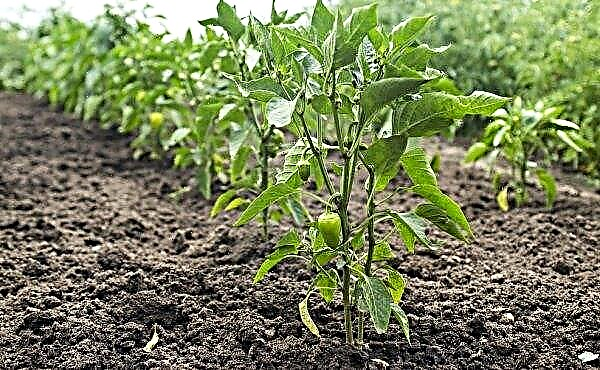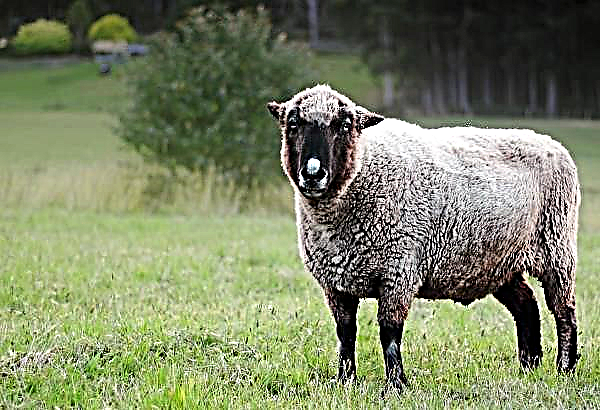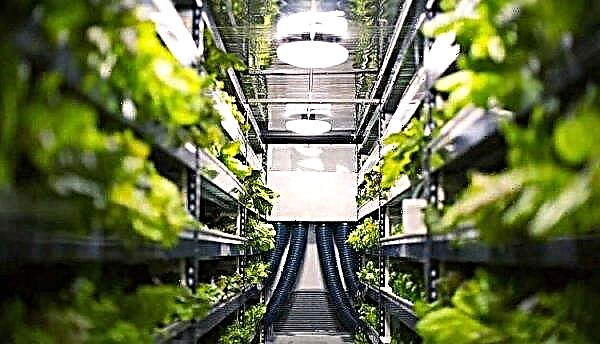Today, there are hundreds of varieties of eggplant, and some of them differ from the usual ones in both color and shape. Among the vegetables that are suitable for growing in our latitudes, you can name the eggplant varieties Ilya Muromets. Consider the features of its cultivation and other characteristics.
Description and characteristics of the variety Ilya Muromets
Eggplant Ilya Muromets was bred in Russia by Gavrish. Vegetables ripen about 115 days after germination. This variety is suitable for cultivation on open ground (mainly in the southern regions), in greenhouses or under a film. The plant reaches a height of 70-100 cm and is medium-tall. The fruits are large, oblong, 35–40 cm long, up to 10 cm in diameter, weight can reach 500–700 g. They have a thin skin, no bitterness, few seeds in the pulp. In greenhouses, the yield reaches up to 10 kg per 1 m², in open ground - 1.5–2 kg per 1 m². Eggplant Ilya Muromets is widely used in cooking. This variety is called universal, since vegetables are used both on an industrial scale and in private farms. The fruits are suitable for canning, they can be baked, cook caviar from them, stew.
In greenhouses, the yield reaches up to 10 kg per 1 m², in open ground - 1.5–2 kg per 1 m². Eggplant Ilya Muromets is widely used in cooking. This variety is called universal, since vegetables are used both on an industrial scale and in private farms. The fruits are suitable for canning, they can be baked, cook caviar from them, stew.
Growing eggplant
Ilya Muromets is not a hybrid, so its seeds can be collected independently, while all the properties of this variety are preserved. To shorten the growing season, it is better to plant seedlings.
Did you know? From a botanical point of view, eggplant is a berry, but in the culinary sphere it is considered as a vegetable.
Preparing and caring for seedlings
Before planting seeds, you need to prepare containers with peat or soil mixed with compost. Seeds are previously recommended to be prepared for planting: in a fabric bag, lower the planting material for 15 minutes in a potassium permanganate solution. After that, they can be additionally treated with a growth stimulator (can be purchased at any specialized store).
The planting process is as follows:
- Furrows make furrows with a depth of about 1.5–2 cm at a distance of 5 cm from each other in containers for planting. Seeds are laid in the furrows and watered with warm water.
- The containers are placed in a warm, bright place and covered with a film that can be removed after the appearance of sprouts.
Important! It is recommended to plant eggplants in cloudy weather or in the evening, when the seedlings will not be threatened by direct sunlight.
Picked plants are watered when the top layer dries. Such seedlings can be planted in greenhouses in a week. And in open ground - when the temperature at night is not lower than + 15 ° C, i.e. at the end of May or at the beginning of June. A week before planting, it is necessary to temper the seedlings. You can take it to a balcony or other cooler place, but at the same time the temperature should not be lower than + 10 ° С.
Planting seedlings on beds
When planting eggplant in open ground, you need to consider the rules of crop rotation. This plant will feel good in the garden, if the predecessors were legumes, cabbage, cucumbers, pumpkin, squash, carrots. Planting these plants in the neighborhood is also possible. Do not grow eggplants in those places where solanaceous earlier grew: peppers, tomatoes, potatoes, etc. Light soil with a pH of 6.5–7 is recommended. In heavy clay soil, the crop will ripen later. But even heavy soil can be improved by adding peat or compost to it. For planting, make holes at a distance of 40-50 cm from each other, and between rows - 60-70 cm. The holes should be filled with compost, peat or humus and watered abundantly to form a liquid earthen porridge.
Light soil with a pH of 6.5–7 is recommended. In heavy clay soil, the crop will ripen later. But even heavy soil can be improved by adding peat or compost to it. For planting, make holes at a distance of 40-50 cm from each other, and between rows - 60-70 cm. The holes should be filled with compost, peat or humus and watered abundantly to form a liquid earthen porridge.
A plant is planted vertically with a lump of earth or a peat pot in the resulting pit. The surface of the hole is mulched, i.e. sprinkled with dry humus, peat or straw to retain moisture. After a few days, the mulch is removed, the earth is loosened, after which the mulch is poured back. Thus, the roots gain access to air and do not dry out.
Did you know? 5 kg of eggplant contains a dose of nicotine equal to one smoked cigarette.
Crop care
This variety of eggplant is unpretentious, therefore it does not require special care conditions. Conduct standard procedures for this type of plant: timely watering, loosening the soil, fertilizing, removing weeds.
Watering Rules
This culture requires regular watering with warm water. After planting, plants are watered for the first time in 3-4 days. Further - 1 time per week until the flowering period. After that - 2 times a week. In this case, the water flow should be 10 liters per 1 m².
Fertilizer needed
For the entire growing period, it is recommended to do 3 dressings. At the same time, they need to be done under the root. The first fertilizer should be applied 3 weeks after planting, but before flowering, the second - during the fruit season, and the third - during the harvest. Organic, mineral or complex fertilizers can be used (ammonium nitrate, nitrophosphate, superphosphate).
Important! If you leave more ovaries, the ripened fruits will be smaller, and the ripening itself will last longer.
Bush formation
In order for the bush to receive a sufficient amount of light and form correctly, you need to remove the lower leaves and shoots after planting until the first branch of the trunk. When ovaries appear, you need to leave 5-7 of the largest. All others are deleted.
Pests and diseases
This variety is resistant to fungal diseases and viruses, as well as diseases characteristic of solanaceous: late blight and powdery mildew. For prevention, you can treat the bushes with fungicidal solutions, for example, potassium polysulfide, before flowering. However, the plant may be affected. black leg and root rot. This is more common for greenhouse plants due to excessive watering.
To solve this problem, it is necessary to normalize humidity and temperature and get rid of the affected plants. On open ground, the main problem for eggplant is Colorado beetle. Fortunately, the market offers many drugs to combat this insect: Prestige, Inta-vir, Karate. Manual collection of pests and their larvae from bushes, as well as dusting of plants with wood ash is also recommended.
Collection and storage
After flowering, the fruits can be harvested after 30–35 days. Gathering begins when vegetables reach the required sizes. It is better to pick vegetables when their skin is still shiny, because when it becomes dull, the taste of the fruit deteriorates. Eggplant should be cut from the bush, leaving a cup and a stalk of about 3 cm on it. Keep the crop in a dark, cool place. At a temperature of + 10 ° C it can be stored for about a month. The fruits do not lose their presentation for a long time. If you need to collect seeds for growing crops for next year, then take the fruit, which has reached a yellow-brown color and has a matte peel. The seeds are removed, washed and dried, after which they can be stored in paper bags for up to 5 years.
At a temperature of + 10 ° C it can be stored for about a month. The fruits do not lose their presentation for a long time. If you need to collect seeds for growing crops for next year, then take the fruit, which has reached a yellow-brown color and has a matte peel. The seeds are removed, washed and dried, after which they can be stored in paper bags for up to 5 years.
The eggplant variety Ilya Muromets is a good option for growing: it is unpretentious, while pleasing summer residents with high productivity. Its fruits are widely used in cooking, they are well stored and long save their attractive appearance.












